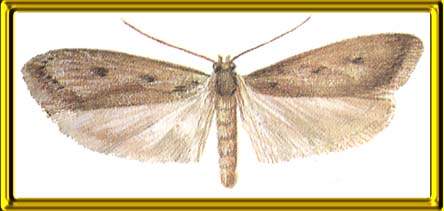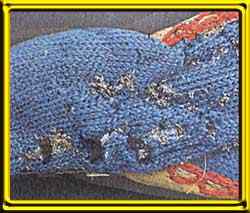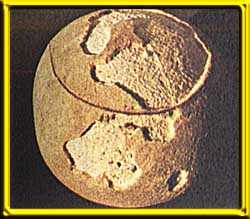
Hofmannophila
pseudospretella
(Brown House Moth)
(Brown House Moth)
The adult moth is bronze-brown, with dark-brown to black flecks on the forewings. The male and female average 8.5 and 14.5 mm in length, respectively. The full-grown larva is white, with a tan head, and is about 6 mm long. The brown house moth feeds on animal and vegetable matter in many countries around the world. The larval stage feeds principally upon upholstery, carpets, furs, skins, dried specimens of animals, in birds' nests, dried plants, dried fruits, and sometimes on books. In some instances this moth has been found damaging leather bindings. The brown house moth is more destructive than the common clothes moth. Its faeces are oblong and larger than those of the common clothes moth. The two pictures below show a tennis ball and some knitting, showing how much damage they can do..!
The life history of this moth is extremely variable, primarily due to variations in temperature. Under favourable conditions, the female can lay 500-600 eggs. The incubation period varies from 8 to 110 days; the larval stage from 71 to 145 days. The larva may enter a desiccation-resistant stage prior to pupation (diapause), which may last for months. The complete life cycle in the field usually takes from 11 to 13 months. The larvae are very sensitive to desiccation and if the humidity is constantly below 80% they cannot complete their development.
In warehouses in Britain, it is usually an omnivorous scavenger in spilled cereals and flour, but sometimes attacks bulk wheat, bagged flour, and other commodities, and is also found in homes. This moth is believed to owe its persistent survival to its omnivorous habits, its high reproductive capacity, and the resistance to adverse conditions of all stages except the growing larvae, which thrive only in high humidity as we said above.
